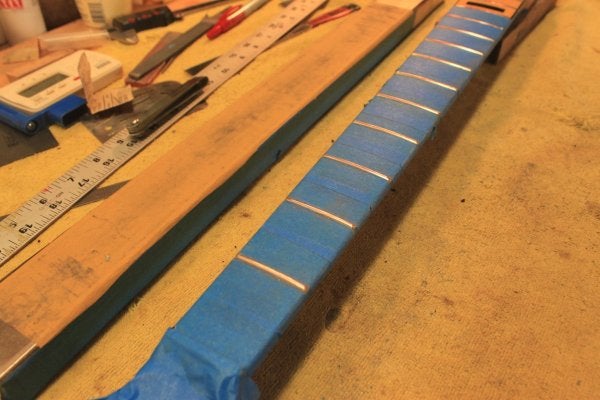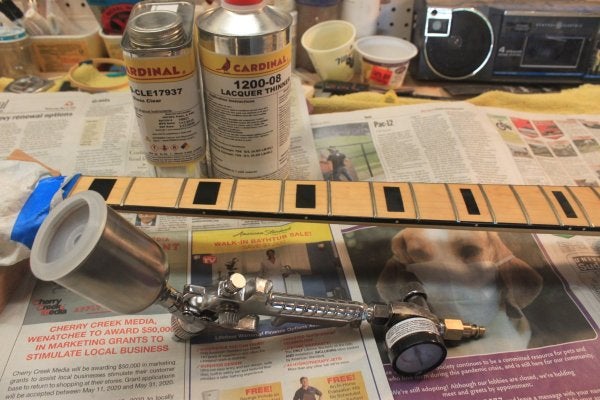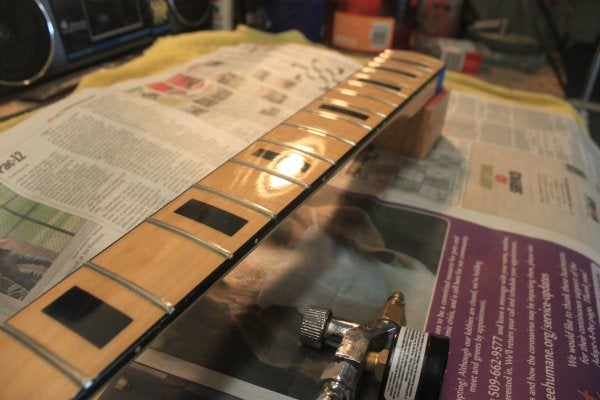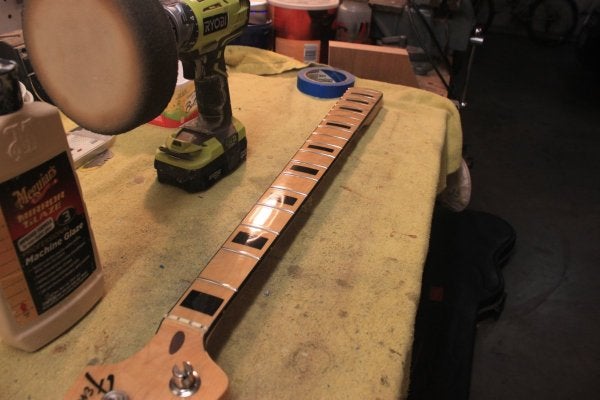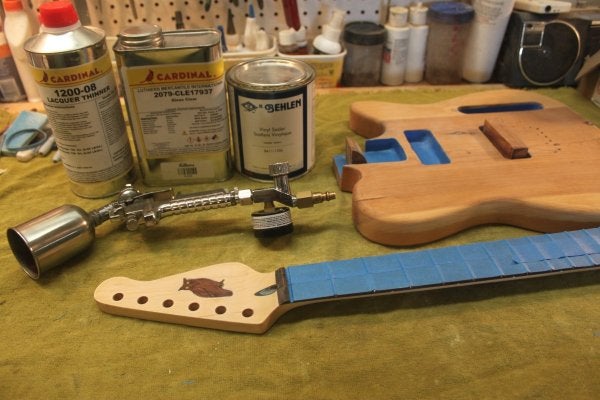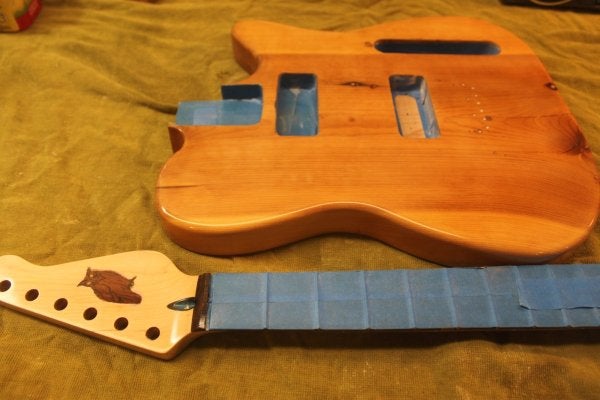I want to buy a Musikraft 1-piece maple neck for my partscaster. Their necks only come with a thin coating of lacquer on them. I'll want to apply a waterslide decal, then seal up the neck further with a vintage style gloss.
I have very little experience with lacquer, so I need a lot of advice on how to do this. Can anyone point me to tutorials on this? I have no clue what sort of product to use for this, how to find a product that's compatible, whether I should spray directly over the entire neck including the fretboard and frets and nut, or if I should tape things off. I have no clue whether I should be sanding the coats prior to starting, or between coats, how long to wait in-between, etc. I don't know how many coats to apply after the waterslide decal, etc. Basically, I'm somewhat clueless and can use some help!
I have very little experience with lacquer, so I need a lot of advice on how to do this. Can anyone point me to tutorials on this? I have no clue what sort of product to use for this, how to find a product that's compatible, whether I should spray directly over the entire neck including the fretboard and frets and nut, or if I should tape things off. I have no clue whether I should be sanding the coats prior to starting, or between coats, how long to wait in-between, etc. I don't know how many coats to apply after the waterslide decal, etc. Basically, I'm somewhat clueless and can use some help!


